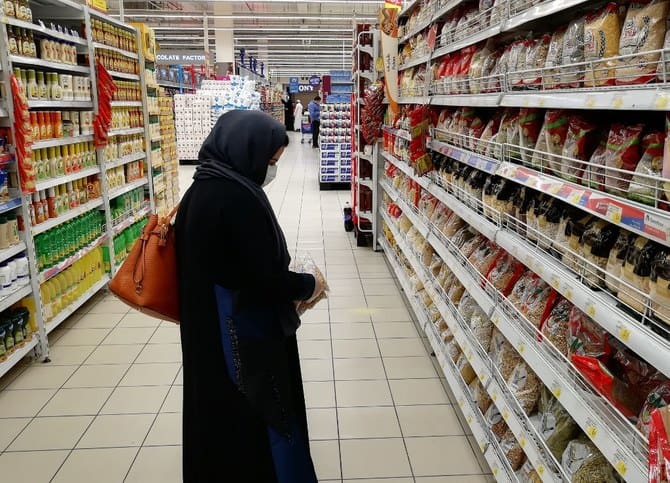Fast-moving consumer goods (FMCG) companies operating in the GCC have faced unprecedented challenges in recent years. A considerable slowdown in market growth has resulted in a fierce battle for market share among firms.
In parallel, the global rise in raw materials and transportation prices, in addition to a structural increase in the cost of doing business in the region, has put FMCG companies’ margins under significant pressure.
According to a recent report by global consulting firm Bain & Company in partnership with NielsenIQ, an advent international portfolio company, the regional FMCG market benefited from a series of tailwinds that boosted profitability and revenue up to 2015.
The market had strong GDP growth and high population growth; disposable income net of inflation increased; and there was a light regulatory environment with subsidies aimed at specific businesses and the absence of taxes such as value-added tax (VAT). This contributed to a period of low competitive market intensity, since many enterprises saw acceptable growth and good profitability.
However, a structural shift in the market became evident post-2015 as FMCG companies faced a series of headwinds. GDP and population growth slowed; disposable income net of inflation went down. The regulatory environment started to get stricter with the introduction of VAT and the removal of most of the subsidies, contributing to an increased pressure on consumers. Companies that were used to reporting growth to their headquarters or board are now facing challenges, and competition started to intensify.
Since 2020, the competitive intensity has accelerated. GDP growth continues at 2%, but population growth has slowed. Disposable income has improved but not to where it was pre-2015. The changes in the regulatory environment for business have put pressure on control, risk, and compliance functions while the region is experiencing a shift to a higher level of VAT, with Saudi Arabia leading the way in increasing the levy from 5% to 15%.
For example, the combined Saudi Arabia and UAE FMCG market was valued at USD$25.8 billion in 2016. It then declined to $24 billion in 2018 with a gradual recovery up to 2021, reaching $26.1 billion.
On the surface, it looks like consumer spending has returned to 2016 levels, but VAT now needs to be factored in. When VAT is excluded, today’s market is valued at $23 billion, a reduction of 2% since 2016 on a CAGR basis.
Challenging environment
Speaking to TRENDS, Faisal Sheikh, a partner based in Bain & Company’s Middle East office, said that the GCC region had been one of the most attractive regions for FMCG companies. However, he believes that the market has moved from hyper-growth and profitability to a competitive and challenging environment, which is expected to continue to put pressure on FMCG companies.
“There are pressures on margins with higher costs of doing business, which includes a spike in raw material prices and transportation costs. This is compounded by cost inflation due to the competitive intensity that increases the scale of promotions and shifts from profitable channels, such as traditional trade, toward lower profit modern trade and digital channels”, he said.
Furthermore, Sheikh believes that the current global issues caused by rising oil prices will undoubtedly impact consumers. At the same time as the world is experiencing record inflation, raw material prices have skyrocketed, fertilizers are prohibitively expensive, and there is a real risk of product shortages, particularly of wheat, corn, and soyabeans.
As a result, firms are now facing a severe problem, he added. “Based on all of our contacts with executives in consumer product companies, they are truly at the stage of ‘let’s get raw materials first, then we’ll think about pricing,’ but it is clear that there will be a price impact on consumers. Because this isn’t a typical variation in raw material pricing.”
The industry before and after the pandemic
Certain FMCG companies benefited from the pandemic since people spent more time at home baking and spending time together. As a result, sales of packaged foods, for example, surged during the pandemic. However, there is now a slight decline in that.
“I think the firms were granted a reprieve during the pandemic. Yes, they had other issues and challenges, but they received a lot of government assistance. They got a lot of support, and people were buying, so they had a little relief. for example, if you look at companies in Saudi Arabia during the last two years, they did well. Consider the Savola firm in Saudi Arabia during the outbreak; they performed admirably. The Iffco company did very well during the pandemic because they provided basic commodities and people remained at home baking and cooking”, said Shaikh.
As a result of the increased family time, food firms performed well during the pandemic. However, these businesses are now in a much more unusual situation than before the outbreak.
FMCG market trends
Market trends show fragmentation of the type of consumers the sector has traditionally provided for.
This year, research conducted by Bain shows that identified trends in GCC consumer behaviors are broadly like the US. For example, consumers in the region care about health and wellness, affordability, and taste and are more satisfied with convenience and e-commerce but less satisfied with taste and freshness.
“We always assumed that consumers in the region were very different from those around the world, but in reality, their trends are similar. Some trends may become more essential than others. That is understandable in certain countries; for example, consumers in the United States and the UAE are far more concerned with convenience and value addition. On the other hand, Saudi Arabia is far more luxury-oriented,” Shaikh said.
He went on to say that, following the pandemic, the most important trends are wellness in the form of weight management and fitness, followed by convenience, as people want convenience in terms of products and services, as well as convenience in terms of the shopping experience, and finally freshness in the form of food, as consumers do not want a long shelf life or a long expiration date that contains a lot of preservatives. So, there’s a uniqueness to this one, and there’s a trend toward localization of the products.
“I believe that they are megatrends rather than short-term trends,” he said.








